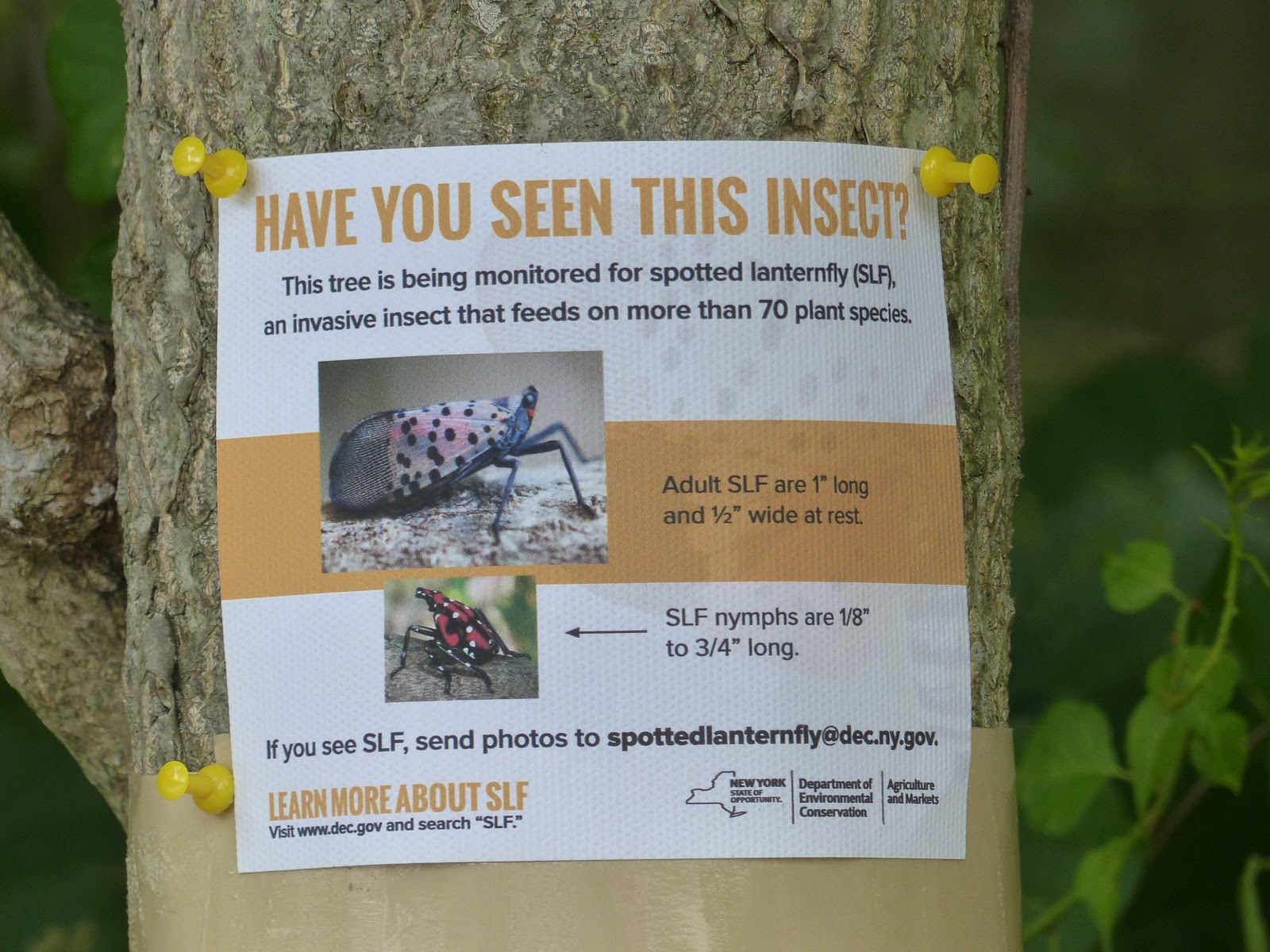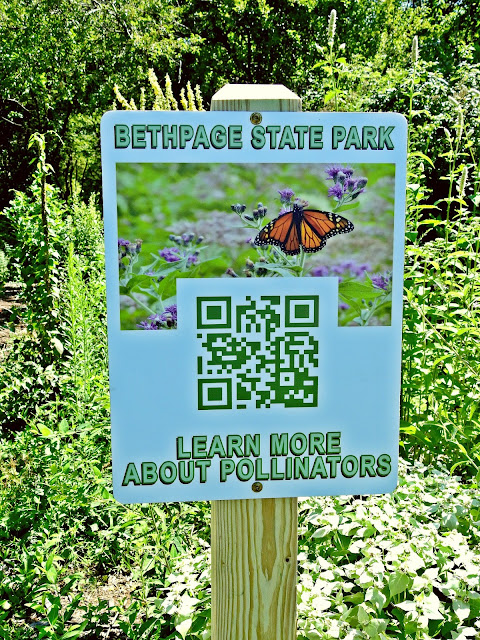What You Need to Know About This Invasive Species -Spotted Lanternfly
Four years ago, a colorful but invasive organism made its way into Pennsylvania from Asia, and has thus, become a topic of concern among the science and ecotourism community. For those of you not yet familiar, the insect is Lycorma delicatula, most commonly referred to as the spotted lanternfly (SLF). According to the Department of Environmental Conservation (DEC), while not currently a strong presence in our state, this insect has already made its way into New Jersey, Virginia, and Delaware. With that in mind, scientists and park officials do want to err on the side of caution to limit this invasive species' dispersal and educate the public-- Lets start now!
What makes SLF destructive?
Spotted lanternfly is a sap-sucking planthopper. It feeds on tree phloem; this is the vascular tissue that enables trees' to transport its sugars. In doing so, SLF can alter tree immunity and make it vulnerable to other insect attacks or diseases. Besides that, there are other factors that play into why SLF has the potential to be harmful to our habitats:
Source: Invasive Species Centre
 |
| Tree of heaven found along a bike trail at Bethpage State Park |
- As of now, scientists have pinned Ailanthus altissima or tree of heaven as SLF's primary host plant. You might be thinking "okay, tree of heaven is an invasive species, good riddance", but take a second and think about how many tree of heavens you see in just one urban environment. This tree species is everywhere along the highway, in rail yards, near fences and in parks. It grows tall, fast and in various conditions, broadening the chances for SLF populations to thrive and become problematic...
- But wait, its also important to note that SLF is not selective! SLF has been documented on approximately 70 host plants including maples, willows, grapevines, and a variety of fruit trees. Imagine the damage spotted lanternfly could have on Long Island's economy and tourism alone?
- Similar to its feeding, SLF is even less selective about where it oviposits eggs. All this insect needs is a hard surface. This includes tree trunks, branches, firewood, outdoor furniture, tools, even your car. Think about the damage a vehicle could do, traveling from point A to B while accidentally carrying just one SLF egg mass (which could be up to 30-50 eggs). Egg masses are small and have a muddy, greyish-brown appearance. When newly laid, a waxy substance can be seen covering the egg cases (see photo). In fact, now is the time that you might want to keep an eye out for SLF eggs (September - November is when adult SLF mate and female SLF will oviposit).

- Thirdly, while SLF feeds, it not only releases sap from the trees but excretes its own sticky substance called "honeydew". This can cover foliage and with enough build up, lead to black sooty mold. Not to mention, when I was at a Long Island Invasive Species Management Area Workshop last week, one of the speakers who works for NYS Agriculture and Markets recalled a time where he visited an SLF aggregation site. He said there was so much honeydew falling from the canopy leaves above him that it could have almost been mistaken for rain. This is not something I nor anyone else probably wants to experience here at Bethpage State Park.
So what is Bethpage doing to take precaution?
Last month, our regional environmental manager Annie McIntyre and her team visited our park to discuss the spotted lanternfly with our staff. With our help, her crew was also able to map out some of our noticeably large tree of heavens. One tree in particular was chosen as a test site; her team took a large"sticky-trap"sheet and wrapped it around the trunk. This would be checked at a later date and hopefully help us identify whether the spotted lanternfly is even in the area.
 As you can see, they also attached some information along with the sticky trap to familiarize the public with the insect.
As you can see, they also attached some information along with the sticky trap to familiarize the public with the insect.
In addition, I have already talked to a few park-goers who were curious about the set-up on this tree and wanted to know more about the insect and its life cycle. We also plan to post more about this invasive species on our social media to highlight the risks but also the means of prevention.
How you can help?
- Take a few minutes and search spotted lanternfly on Google/YouTube. Learn how to identify it and see footage of how it behaves. Unlike some of the other invasive insects we have in NY, spotted lanternfly in both the nymph and adult stages are very colorful and should make it easily distinguishable from other insects.
- As you might assume, the Department of Environmental Conservation as well as the Department of Agriculture are on high alert and have wonderful educational information for you to utilize on their websites too.
 |
| Source: PA.gov |
- If you find a spotted lanternfly or an infestation report it! You can email photos and the sighting location directly to the DEC at spottedlanternfly@dec.ny.gov or call the Invasive Species Hotline at 1-866-253-7189.
- Just to be safe, if you are traveling to Pennsylvania and taking items that will be left outside (bicycles, camping supplies, etc.) please check your items before returning home. This includes your car as well! *As of September 12, 2018, there have been two SLF sightings in two separate locations upstate NY, one of which was found on a vehicle!!* For more specified information about which Pennsylvania areas have SLF visit this PDF.
- In the event that you might see an SLF egg mass you can learn how to properly remove it here.
These simple steps can make a huge impact! Just to prove a point, there has already been a great deal of success because of public awareness. I heard from a DEC staff member that their division believes a simple advertisement they put out in Pennsylvania led to over 1,000 call-ins from the public...of which approximately 98% of those calls regarding SLF sightings were actually accurate! I believe you too can make a difference and that we do have a fighting chance to prevent the spread of this invasive species. Let's keep spotted lanternfly out of NY!





Comments
Post a Comment